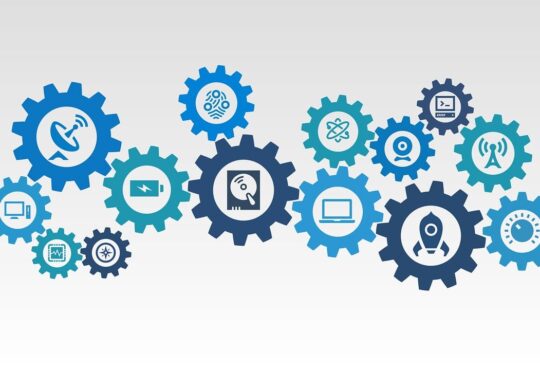
Antoine Larmanjat is the CIO of Euler Hermes, the world leader in trade credit insurance. He has held several strategic IT positions at banks in France and the Netherlands and created Payconiq, a FinTech in Payments. During APIdays Paris 2018, he shared his feedback on how large organizations are changing with APIs.

What motivated the transformation of Euler Hermes?
Two needs underline the transformation of Euler Hermes. On the one hand, the need to continue to evolve with new sources of growth while keeping costs low. On the other, the evolution of our business in a connected world where the automation of purchasing processes is accelerating, with the development of e-commerce platforms, marketplaces, automated logistics chains. Historically, to purchase a credit insurance covering the risk for non-payment, people wrote a letter and shook hands, today individuals buy them on Internet, and tomorrow our products will be bought by two computers interacting with each other.”
What role do APIs play in the transformation of Euler Hermes?
From a technological point of view, APIs are the only solution to automate commercial exchanges. And from a business point of view, APIs have also become a key factor of choice for our partners and an important business channel. In addition, our clients were once traditionally CFOs and business leaders. Tomorrow, a new player will be more and more present in the equation: the CTO/CIO. Because a solution could be selected if it is easier to integrate into the IS, thanks to APIs, and if it brings value, even if it is more expensive than another. IT must therefore be at the forefront with a technological value proposition to respond to this hyper integration of Information Systems.
The API Economy is also a new value chain. How did it come to life at Euler Hermes?
APIs make it possible to develop new products without causing an explosion of investments, by applying the principle of “composable value chain”. APIfied components can be recomposed into new products by changing only the frontend, the user interface, but without changing reusable components from one product to another. It is the same economic model applied by car manufacturers who have cut their ranges of vehicles into basic components that will be assembled to form a particular model, for example with the same chassis but a different bodywork and upholstery. We can create new products by keeping 90% of the APIs that make up our value chain, whether developed internally or outside the company.
For example, for a credit insurance product sold online, in a single API it will be necessary to pack APIs for customer identification, credential loading, signature authorization, company credit check, and then an API for contract sale. 90% of these components will be identical for a factoring product, safety bonds or credit insurance. The customer will always need to authenticate himself, download his documents, etc …
In addition, the APIs that are our internal products can also allow others to create their own products and differentiate themselves in their market.
For example, Euler Hermes has created a credit insurance solution for marketplaces, based on our “Single Invoice Cover” API. It can determine in real time the possibility of hedging a single transaction between a supplier and a buyer, and define a specific insurance price, adjusted to the risk level of this transaction. Marketplaces can thus offer suppliers, for each transaction, a new hedging service against the risk of non-payment of their receivables.
This model of API reusability allows a low investment cost and the multiplication of growth because it is a “scalable” model (generating economies of scale). APIs are in fact the best of both worlds between a “craft” model (which requires little initial investment but whose production costs increase according to order volume) and a massive industrial production model (which requires a very important initial investment but whose manufacturing cost is then marginal).
Which organizational models make the APIfication of the company possible?
We have adopted a classic DevOps organization with small teams organized into autonomous and multidisciplinary “squads”, able to create their own services. We have a vertical operational management for each squad led by a “product owner” and a horizontal management led by the business functions of the company. What is important to understand is that the Euler Hermes IT team is made up of 600 people, but the entire company is APIfied. It is important not to think of the API as a separate initiative in a department of the company. Everyone makes the API because for the teams it is also the best way to exchange.
Euler Hermes has been APIfied for a year. What lessons can you draw from this experience?
I also draw from the experience of implementing my first Rest APIs in another business, in 2013, to answer the need for services encapsulation. The idea was to reuse services between different countries that did not share the same front end. An SOA approach was initially considered but too complex to implement, whereas with an API the idea could be realized quickly.
At Euler Hermes, we have also been able to measure rapid and significant changes over the last year. The agile culture and the cloud allow us to go faster between the idea of a service and its availability on the market. Feedback on products and initiatives is also faster! Another important change is that previously business analysts described screens, now they describe APIs. We have accompanied that change with training, but it also requires a state of mind of continuous self-training. Our new agile mode of operation also made us do technology again and recruit, while we previously bought off-the-shelf applications. We have rediscovered the taste for “craftmanship”, for the promotion of a certain know-how. This in-house know-how is important because offering new APIs to our customers and partners also creates new needs, for example the availability of 24/24 services, and it implies a greater respect of development standards.
Written by Séverine Godet
This article first appeared on Medium.
Want to contribute articles to APIdays? Please fill out this short (2min) form









